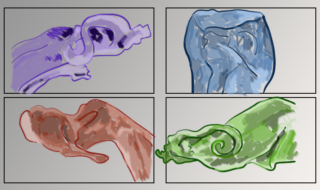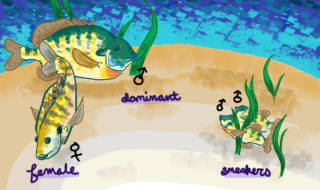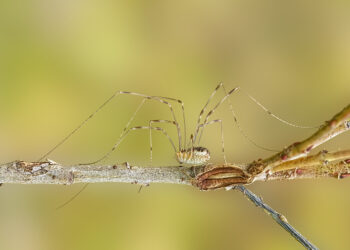Imagine a pride of lions: one regal male residing elegantly over his hard-won harem of females, shaking out his mane and lying his lovely, savage head upon his paws as the hot sun beats down.
The lions eat the gazelles, the gazelles feed on the grass, and nature’s great balance (one might even say, the circle of life) is at peace.
Except, wait a tic: where are all the other boy lions? How can there be so many females and so few males? That doesn’t seem balanced at all.
Those bachelors who are unable to mate, or as science mercilessly refers to them, “zero-class males,” have probably formed a bachelor posse and are roaming the savannah elsewhere doing their best to stay alive. But Charles Darwin would interject: if they are not reproducing, then why has nature selected them to exist?
Evolutionary theory is pretty ruthless about it: any strategy that consistently fails to reproduce shouldn’t persist because such individuals will ultimately die off without passing on their genes. And yet.
Some bachelors are just biding their time before they make their move, like a calculating Scar waiting for an opportune wildebeest stampede. Eventually, the harem’s current owner will age and weaken and one of our young, strong bachelors can successfully fight him for ownership.
But a lot of animal systems don’t work that way: oftentimes, the bachelors will never grow to be strong enough to face off against a dominant harem owner.
For example, take the bluegill sunfish. Bizarrely, only a certain number of males reach a large body size and defend nests of females’ eggs; meanwhile, a separate faction of miniature males (smaller even than the female) apparently wanders aimlessly.
And they’re not exceptional: these tiny wandering males can make up nearly a third of the male population. Evolution, are you drunk?
Turns out, most bachelors are probably not single
Predictably, even though it looks like it makes no sense, nature knows exactly what it’s doing. To the naked eye, it appears that these bachelors have no way of mating and should be dubbed as “zero-class” (rough).
However, after watching their behavior more closely, biologists figured out that the smaller males were using entirely different tactics compared to their dominant counterparts.
Their small and agile bodies make them well suited for a decidedly underhanded, but effective, alternative mating strategy: “sneaking.”
While the dominant male’s back is turned, the sneaker male darts quickly in, sprinkles some sperm on the female’s eggs, and is gone in an instant.
Genetic studies later confirmed these nefarious tactics, showing that the dominant male defending a nest fathers less than 80% of the offspring on average.
Meaning not only are our so-called bachelors able to sneak in there, but they must also possess some pretty aggressive sperm to grab that big of a slice of the paternity.
This leads us to a fascinating niche of evolutionary biology called sperm competition, which is exactly what you think it is: sperm duking it out against each other for the prize of fertilizing an egg.
What do sperm battles look like?
In the case of group-spawning animals like fish, sperm wars are mainly staged in terms of quantity. You might have even been thinking that those mini-males look pretty cute, but what if I told you that their testes-to-body-size ratio is four times as large as the dominant males’?
When you only have one second to stage your attack, you want to make sure you’ve got plenty of ammo: sneaker males inundate their targets with a barrage of gametes to rival their opponents’.
The open battlefield of the aquatic environment means that males are rarely pitted one-on-one against each other, but this all changes when it comes to species that internally fertilize.
Introducing, the weaponized world of the dragonfly (literally). Male dragonflies possess an array of elegant weaponry varied in form and style, but you’ll never see a dragonfly casually toting the trident of Zeus: their weapons are subtly stored, and are for the express purpose of scouring away the sperm of other males.
Specially shaped penises featuring scraping appendages are used to deftly remove sperm from previous matings before a male’s own sperm is transferred to the female.

Because they are able to manually displace the sperm of their opponents, dragonflies are able to avoid any real kind of sperm face-off. But in the event that sperm from two different males are in the same female’s reproductive tract at the same time (in fact, a common scenario), this is where it really goes down: the individual sperm, or spermatozoa, are built for the race.
In more competitive environments, sperm can develop ultra-long tails or invest in more energy-producing structures in order to increase their velocity. While we’ve known for a long time that speed determines which particular spermatozoid reaches the egg, competition becomes exponentially fiercer when it’s the sperm of two different males facing off.
Through a combination of sneaky behavioral strategies and superior sperm, evolutionary biologists suspect that the apparent “bachelors” roaming the animal kingdom actually probably have a heck ton of game.
So next time you see a photo of a majestic lion, ruler of the savannah, master of his kingdom? Just sayin’, he’s probably compensating for something.







